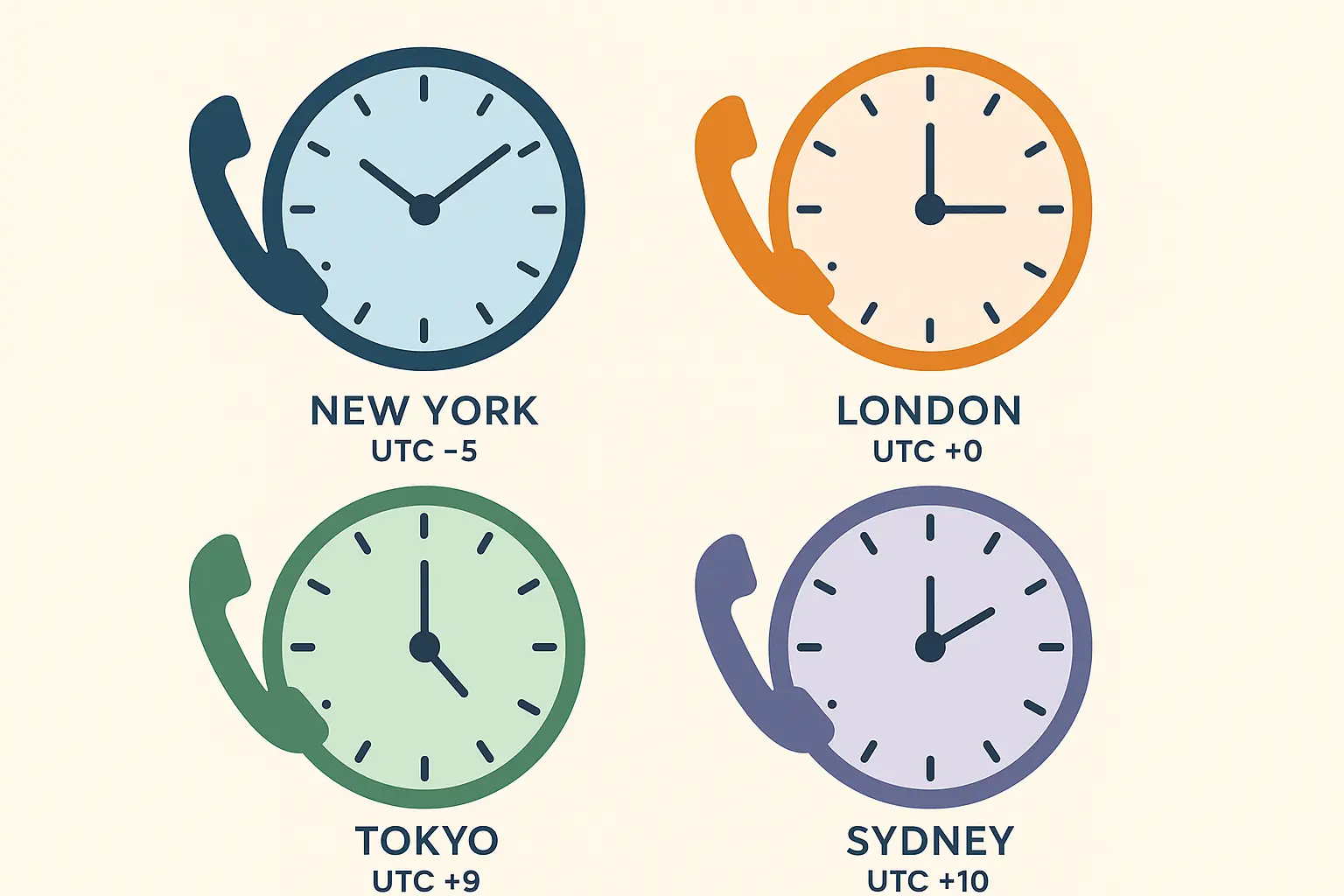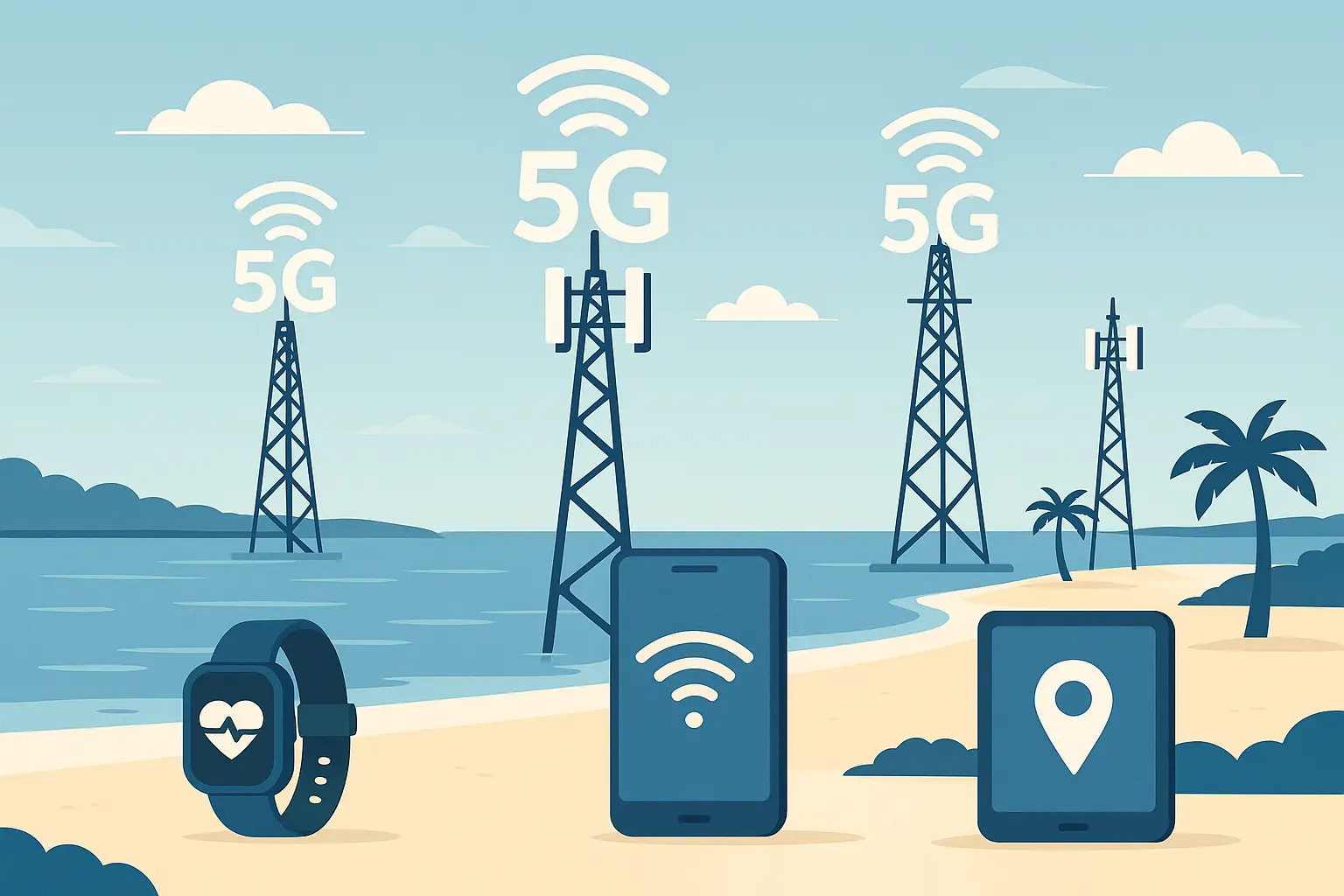If you’ve ever wondered about that 228 area code you keep seeing on Mississippi’s Gulf Coast, you’re not alone. This little three-digit number covers some pretty interesting territory – from the casinos in Biloxi to the shipyards in Pascagoula, connecting about 418,601 people who call this coastal stretch home.

Table of Contents
Table of Contents
-
Where Exactly Does the 228 Area Code Cover?
-
Time Zone Realities You Need to Know
-
Decoding 228 Phone Numbers Like a Pro
-
The Untold Story Behind Area Code 228
-
Final Thoughts
Here’s what you actually need to know about 228 – where it works, when to call, and a few interesting stories about how it came to be. I’ve dug up some insider details about this coastal region that most people never think about until they need to make that important call.
TL;DR
The 228 area code covers Mississippi’s entire Gulf Coast, hitting all the major spots like Biloxi, Gulfport, and Pascagoula. Everything runs on Central Time, which matters more than you’d think when you’re trying to reach businesses. You can sometimes figure out where a 228 number originated by looking at those middle three digits, though people move around and take their numbers with them these days. The whole thing started in 1999 when Mississippi outgrew its original 601 area code, and Hurricane Katrina actually ended up making the communication infrastructure stronger than before.
Where Exactly Does the 228 Area Code Cover?
The 228 area code isn’t spread all over Mississippi – it’s laser-focused on the Gulf Coast region. Think of it as a narrow band hugging the shoreline, where most of the action happens between the casinos and the coast.
What’s interesting is the demographic balance here: 205,801 males and 212,800 females, which works out to about 97 guys for every 100 women. ZipAtlas Area Code 228 Demographics That reflects the mix of industries you’ll find – everything from tourism and hospitality to heavy industrial work and maritime jobs.
The Big Three Cities
When people think 228, three cities come to mind: Biloxi, Gulfport, and Pascagoula. Each one has its own personality and communication patterns that are worth understanding.
Business owners along the coast often need to juggle communications across different platforms and time zones, especially during tourist season. Many have figured out how to forward text messages to an email address to keep everything organized when things get crazy busy.
|
City |
What Drives It |
Communication Style |
Busy Hours |
|---|---|---|---|
|
Biloxi |
Casinos/Tourism |
Customer service, bookings |
10 AM – 10 PM Central |
|
Gulfport |
Port/Shipping |
Business-to-business, logistics |
7 AM – 6 PM Central |
|
Pascagoula |
Shipbuilding |
Industrial coordination |
6 AM – 5 PM Central |
|
Ocean Springs |
Arts/Tourism |
Creative services, hospitality |
9 AM – 8 PM Central |
Biloxi – Where the Action Is
Biloxi is the crown jewel of the 228 region, famous for its casinos and the constant buzz that comes with them. Walk around downtown and you’ll hear phones ringing everywhere – casino workers coordinating shifts, hotel staff handling reservations, tourists calling for directions.
The gaming industry transformed Biloxi’s communication needs. What used to be a quiet coastal town now handles massive volumes of calls, especially during peak tourist seasons and major events.
Gulfport – The Business Hub
Gulfport is where the serious business happens. The port operations alone generate thousands of calls daily – shipping coordinators, customs officials, logistics managers all keeping cargo moving through one of the Gulf’s busiest ports.
If you’re calling Gulfport numbers, you’re probably dealing with someone who’s focused on getting things done efficiently. They appreciate direct communication and don’t have time for small talk during peak shipping hours.
Pascagoula – The Industrial Heart
Pascagoula might fly under the radar compared to its neighbors, but it’s the industrial powerhouse of the region. Ingalls Shipbuilding runs multiple shifts around the clock, creating interesting call patterns during shift changes and project coordination.
The industrial nature of Pascagoula means you’ll find different communication rhythms here – heavy weekday traffic, quieter weekends, and very specific busy periods tied to shipbuilding schedules.
The Smaller Players
Beyond the big three, 228 covers dozens of smaller communities that add their own flavor to the mix.
Ocean Springs – The Creative Corner
Ocean Springs has become the artsy escape of the coast. For such a small town, it generates surprising communication traffic – art dealers working with collectors, festival organizers managing events, gallery owners scheduling exhibitions. The creative community here has embraced technology in ways that would surprise you.
The Western Edge
Bay St. Louis, Waveland, and Pass Christian represent the western boundary of 228 territory. These communities are growing steadily, putting new pressure on number availability and creating interesting challenges for telecommunications planning.
Many businesses in these growing areas have had to get smart about international communications, especially with their proximity to New Orleans bringing in visitors from around the world. Understanding the US phone number format with country code has become essential for local businesses dealing with international clients.
Recent news highlighted how area code usage connects to business regulations. “Insurance Commissioner Issues Cease and Desist Order Against Sirius Mutual Over Potential Fraud” reported that a company using a Bay Saint Louis address with a 228 number was operating without proper Mississippi insurance licensing. It shows how your area code can tie into regulatory compliance issues you might not expect.
Why Geography Matters
The Gulf Coast creates a unique linear development pattern that shapes how 228 works. Unlike area codes that can expand in all directions, this one is constrained by water on one side, creating interesting challenges for telecommunications planning.
Most 228 numbers serve communities within a relatively narrow coastal band. You won’t find them deep inland – the coverage area hugs the shoreline where the population centers developed naturally.
Time Zone Realities You Need to Know
Here’s something that catches people off guard: all of Mississippi’s Gulf Coast runs on Central Time. Sounds obvious, right? But you’d be surprised how many folks from other time zones mess this up when calling local businesses.
Central Time Zone Basics
The entire 228 region follows Central Standard Time in winter and Central Daylight Time in summer. Pretty straightforward, but here’s where it gets interesting – the tourism and casino industries don’t exactly follow normal business hours.
Call a Biloxi casino at 10 AM Eastern? You’re hitting them at 9 AM their time, which might be perfect or terrible depending on what you need. Most casinos are 24/7, but their business offices often don’t start until 9 or 10 AM Central.
For businesses juggling customers across time zones, many have started forwarding text messages to a Slack channel to keep everyone in the loop. It’s especially helpful during busy tourist seasons when timing matters most.
Cross-Time Zone Communication Tips
East Coast callers: You’re one hour ahead. That early morning call you’re making? It’s hitting them even earlier. Most Gulf Coast businesses appreciate calls after 9 AM Central (10 AM your time).
West Coast callers: You’re two hours behind, so your afternoon calls land during their late business hours. Try calling mid-morning Pacific Time for better results.
Quick timing hack: When in doubt, aim for 10 AM to 4 PM Central Time for business calls. You’ll catch most places during their prime hours.
Time Zone Communication Checklist:
-
☐ Double-check current Central Time before important calls
-
☐ Remember Daylight Saving Time changes (March-November)
-
☐ Consider industry-specific hours (casinos vs. shipping companies)
-
☐ Plan for extended weekend hours during peak tourist seasons
-
☐ Set reminders for recurring calls to avoid time zone mistakes
Decoding 228 Phone Numbers Like a Pro
Every 228 number follows the standard format: (228) XXX-XXXX. Those middle three digits (the exchange code) used to tell you exactly which town the number belonged to. These days, with number portability, it’s not as reliable, but you can still pick up some clues.
Exchange Codes and What They Mean
Back in the day, if you saw 228-374, you knew it was Biloxi. A 228-863 number? Probably Gulfport. These patterns still exist, but people move around and take their numbers with them, so don’t bet money on it.
With 61.7% of the 228 population (205,434 people) in the workforce, business communications make up a huge chunk of daily call traffic. ZipAtlas Area Code 228 Labor Statistics That high participation rate means business calls dominate the communication patterns throughout the region.
Here’s what’s interesting: different areas have different calling patterns. Biloxi numbers see heavy evening traffic (hello, casino industry), while Pascagoula numbers are busiest during weekday business hours (thanks to the shipyards).
Understanding these patterns becomes important when you need to forward text messages on an Android phone for business continuity across different Gulf Coast locations. Different exchanges serve different business districts with their own communication rhythms.
|
Exchange Code |
Original Area |
Common Services |
Peak Times |
|---|---|---|---|
|
228-374-XXXX |
Biloxi Central |
Casinos, hotels, tourism |
Heavy evening traffic |
|
228-863-XXXX |
Gulfport Port |
Shipping, logistics, B2B |
Peak morning hours |
|
228-762-XXXX |
Pascagoula Industrial |
Manufacturing, shipbuilding |
Weekday focus |
|
228-875-XXXX |
Ocean Springs |
Arts, galleries, boutiques |
Weekend activity |
Mobile vs. Landline Mystery
You can’t tell if a 228 number is mobile or landline just by looking at it anymore. That number that started as a hotel front desk line in 2005 might now belong to someone’s cell phone.
A 228-374-5555 number might have originally been assigned to a Biloxi hotel’s front desk, but today it could be the mobile number of a casino manager who took it with them when they changed jobs. This flexibility helps people maintain consistent contact information but makes it harder to predict how calls will be answered.
The practical upshot? Don’t assume anything about response times or availability based on the number format. A “landline-looking” number might actually reach someone’s pocket, while what looks like a mobile number could ring at an empty office desk.
The Story Behind Area Code 228
Before 1999, all of Mississippi used just one area code: 601. As the state grew and businesses expanded (especially along the coast), they ran out of numbers. Something had to give.
The Great Split of 1999
Mississippi needed more phone numbers, and the Gulf Coast was growing fast enough to justify its own area code. The tourism boom, casino development, and industrial expansion created unique communication needs that were different from the rest of the state.
The timing was smart. By 1999, the coast was really taking off economically, and having a dedicated area code helped establish the region’s identity as distinct from inland Mississippi.
Mississippi’s area code evolution continues today. “New Area Code Approved for Mississippi” reported that area code 471 will be implemented for the 662 region by late 2025 or early 2026, showing how the state keeps growing and needing more communication capacity.
The unique
The unique needs of coastal businesses during this growth period led many to adopt advanced solutions like forwarding text messages to an API URL endpoint to handle the increased customer interaction volume. The 228 region needed more sophisticated communication tools than traditional Mississippi businesses.
Hurricane Katrina’s Unexpected Impact
Then 2005 happened. Katrina didn’t just destroy buildings – it wiped out phone lines, cell towers, and entire communication networks. But here’s the thing: rebuilding gave the region a chance to build back better.
The median household income in the 228 area is $56,911, which shows how well the region has recovered and strengthened economically since Katrina. ZipAtlas Area Code 228 Income Data That income level demonstrates the area’s economic resilience and successful rebuilding efforts.
The post-Katrina infrastructure is actually more robust than what existed before. New cell towers, updated systems, and better redundancy mean the 228 region now has some of the most reliable communications in the state.
Many businesses learned hard lessons about backup communication during Katrina. That’s why you’ll find Gulf Coast companies using multiple communication channels – traditional phones, mobile numbers, email forwarding, and text message systems that can reroute when networks go down.
What’s Next for 228
The region keeps growing, which means more demand for phone numbers. Telecommunications planners are keeping an eye on usage rates, but there’s no immediate crisis. Still, they’re already thinking about solutions – whether that’s adding an overlay area code or finding other ways to manage number demand.
Area Code Planning Considerations:
-
Current Usage Assessment
-
Available number blocks: Monitoring ongoing
-
Monthly assignment rate: Steady growth
-
Projected exhaustion: Not immediate concern
-
-
Growth Factors
-
Population increase: Steady coastal development
-
Business expansion: Tourism and industrial growth
-
Mobile adoption: Increasing demand
-
-
Future Solutions
-
☐ Overlay area code implementation
-
☐ Geographic split consideration
-
☐ Number conservation measures
-
☐ Technology migration planning
-
The good news is that modern technology gives us more options than we had in 1999. VoIP, internet-based communications, and smart forwarding systems mean we’re not as dependent on traditional phone number allocation as we used to be.
Final Thoughts
The 228 area code is more than just three digits – it represents a region that’s been through a lot and come out stronger. From casino floors to shipping docks, from art galleries to industrial sites, these numbers connect a community that knows how to adapt and thrive.
Whether you’re calling into the area or living there, understanding how 228 works can save you time and frustration. The Gulf Coast has its own rhythm, and once you get the timing down, you’ll find it’s a pretty welcoming place to do business.
And if you’re someone who needs reliable communication backup – especially important in a region that knows how quickly things can change – having message forw arding set up isn’t just convenient, it’s smart planning. Because down here on the coast, we’ve learned that staying connected matters, no matter what comes our way.
Whether you’re dealing with the casino crowds in Biloxi, coordinating shipments through Gulfport, or managing the industrial schedules in Pascagoula, having reliable communication systems can make all the difference. That’s where services like Auto Forward SMS become invaluable – automatically forwarding your text messages to email ensures you never miss critical communications, even when cellular networks face disruptions during hurricane season or other emergencies.
The Gulf Coast has taught its residents and businesses the importance of communication redundancy. When you’re in a region where weather can change everything in a matter of hours, having multiple ways to stay connected isn’t luxury – it’s necessity. Ready to ensure your important messages always reach you? Try Auto Forward SMS today and experience the peace of mind that comes with never missing a crucial text again.
Where is 228 area code located? Right here along Mississippi’s beautiful Gulf Coast, serving communities that have weathered storms, celebrated growth, and built a communication network that keeps this unique region connected to the world.





